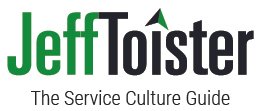Why We’re Addicted
Multitasking is really about attention.
We are easily able to focus our attention when we’re doing just one thing. Trying to do more than one thing requires us to focus and re-focus attention.
The part of our brain responsible for focusing attention is called the Reticular Activating System or RAS. It sorts through a deluge of internal thoughts and external signals to decide where our conscious brain should tune in.
Unfortunately, the RAS has an achilles heel: novelty.
Novelty’s ability to instantly capture our attention used to be a big advantage when we lived simpler lives. One of your ancestors might have been foraging for berries in the woods, humming a merry tune, when they suddenly spotted a bear. You’re here today because the novelty of seeing a bear grabbed their attention away from the delightful bliss of berries and tunes.
Today’s world is an overload of novelty.
Our phones and computer screens are a constant barrage of buzzes, beeps, and flashes. We have two monitors with multiple software programs running at once. Co-workers constantly interrupt us in our open plan office spaces.
It doesn’t stop when we get home. We have television, DVR, Netflix, and video games. Our friends are only a text, Facebook message, or FaceTime session away.
The rational argument for multitasking is managing multiple priorities. That might hold some weight if we were actually working on something useful. We’re not. Our RAS doesn’t make decisions about where to focus attention based on an activity’s relative usefulness. It’s a sucker for anything novel.
Finding something novel triggers a release of dopamine in our brains. Dopamine feels good. In his book, Your Brain at Work, David Rock calls this the “toward” response. It tells us that whatever we’re doing, we should do more of it.
And we do.
How We Become Multitasking Junkies
Chronic multitasking causes a few problems that heighten the addiction.
One issue is our dopamine receptors become dulled from overuse. That means we have to multitask more to get the same effect. Checking Facebook ten times a day isn’t quite doing it, so you might have to up it to twenty.
Another problem caused by chronic multitasking is it lessens our ability to filter useful information from meaningless junk. A high priority project receives exactly the same attention as our latest status update. The end result is multitasking for the sake of multitasking.
While reading this post, how many times have you been tempted to stop and check something else?
Email, IM, Facebook, Twitter, text, Pintrest, Vine, Instagram, Snapchat, your stock portfolio, Candy Crush, whatever. There’s no real purpose to it, just the irresistible urge to multitask.
It gets worse.
Chronic multitasking can lead to something called Directed Attention Fatigue or DAF. Here are just a few of the common symptoms:
- Distractibility
- Irritability
- Impatience
- Indecisiveness
- Difficulty starting and finishing tasks
This doesn’t bode well for any job that requires any concentration. It’s why we feel mentally exhausted at the end of a work day that was mostly spent sitting in a chair.
Strangely, we feel physically exhausted too. That’s because all that concentration actually requires a lot of physical energy.
And, because multitasking is really a less efficient way to work, we end the day with more work to get done. Our brilliant solution is often to work more hours and do more multitasking.
Psychologists have compared DAF to ADD. Different conditions, same impact. Our smart phones and multi-monitor set ups are basically giving us ADD.
Squirrel!
Quitting the Multitasking Habit
If you’re addicted to multitasking, you’re not going to like this part.
Quitting isn’t easy.
Perhaps you’ve been telling yourself you can quit when you want to, but you just don’t want to. Sure, you’d know you’ve hit rock bottom if you fall into a fountain at the mall while texting, but you haven’t done that yet. Not like that lady on TV.
There are some solutions. You need to be committed to make them work. It’s going to be difficult at first, but gradually you’ll feel better.
One solution is to change the way you design your workspace. Go minimalist. Cut out distractions like a second monitor. Clear off your desk to create a more calming environment.
The next step is changing your work habits.
Give yourself permission to focus on one task at a time. Keep other computer programs closed when they’re not in use. Check email and then close email. Check Facebook and then close Facebook. Concentrate on creating that PowerPoint deck and then move on to something else.
This works even if it’s only for a short duration. I will frequently set the timer on my smart phone for 13 minutes and tell myself to focus on a single task during that time. Something amazing often happens. By the end of the 13 minutes, I’m fully absorbed and want to keep going without interruption.
No problem. Just hit the timer again for another go. Pretty soon I’m crushing tasks by giving one thing at a time my full attention.
The final solution is perhaps most important. You need to give your brain a break.
Shut everything down. Take a walk to get some fresh air. Researchers have found that being outside in nature works wonders at counteracting the effects of Directed Attention Fatigue.
Your brain will feel better after getting some rest. It will be more alert and focused. The great part about that is you can get more done while your co-workers continue to spin around on the hamster wheel called multitasking.
The big question is can you kick the habit?
Helpful Links
Here’s a collection of links to help you expand your knowledge of multitasking and its addictive qualities. Some are useful and others are just for fun.








